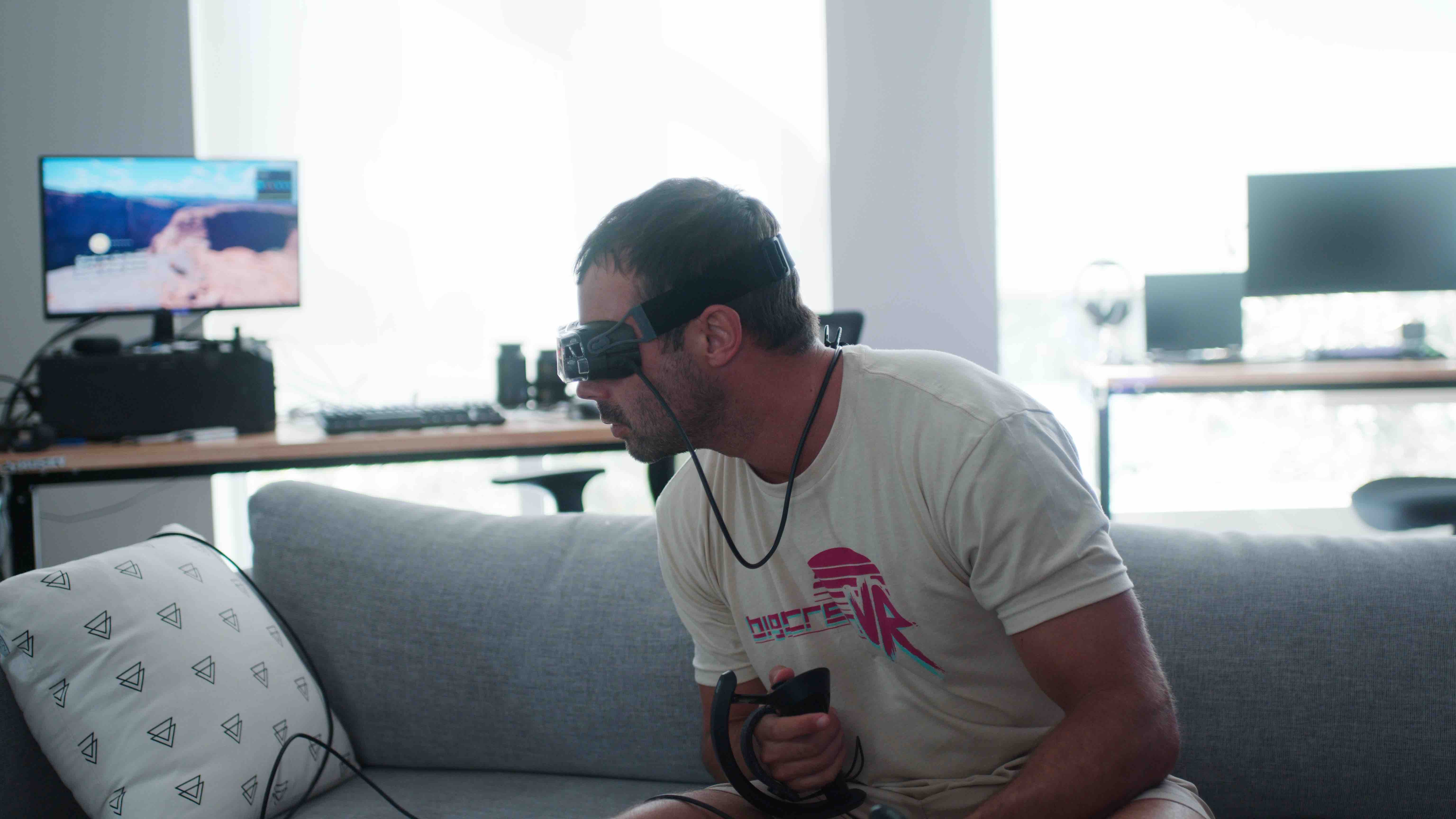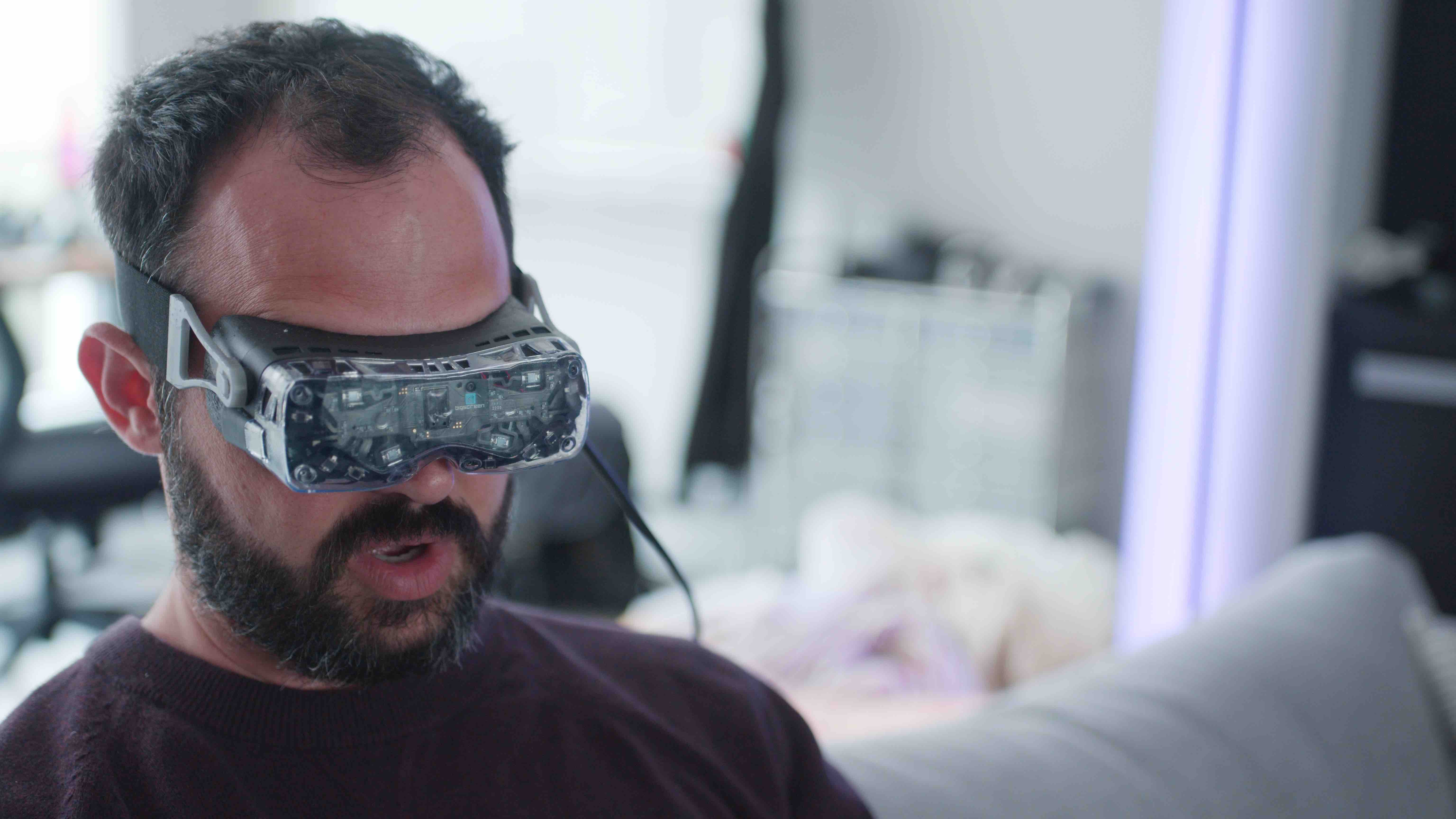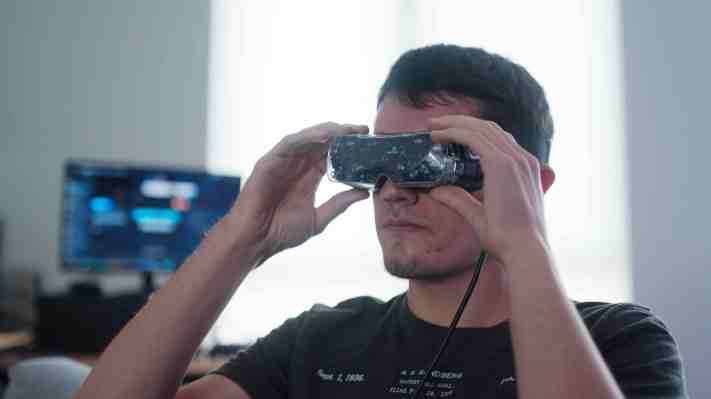I’m not sure how high up size is on the VR scene’s current list of complaints. Truth is, there are still a lot of things standing between the technology and mainstream acceptance. Still, massive, bulky headsets are a thing worth discussing.
Back at CES, I tried HTC’s Vive XR Elite, which made portability a centerpiece. After also demoing the PlayStation VR2, the Magic Leap 2 and the Meta Quest Pro at CES, I can confirm that size does, indeed, matter here, as far as comfort is concerned. And that was just over the course of a 20-minute trial. Get much longer than that, and the things can wear on the neck, inhibit movement and generally turn you into a sweaty mess.
This morning, Los Angeles-based Bigscreen announced its own product, which it’s currently billing as the “world’s smallest VR headset.” The somewhat ironically named Bigscreen Beyond weighs in at a little over a quarter pound — compare that to the Vive XR Elite’s 1.4 pounds. In a release, founder and CEO Darshan Shankar notes that modern headsets have largely been heading in the opposite direction, as technology has improved.

Image Credits: Bigscreen
“Today’s leading VR headsets have doubled in weight compared to headsets from 2016,” he says. “We built Beyond because we felt VR was too heavy, bulky and uncomfortable. We invented new technologies to increase comfort and developed ultra-high-end components like OLED microdisplays and pancake optics to increase immersion. To deliver the best software experience for watching movies in Bigscreen, we also had to build the best hardware with Bigscreen Beyond.”
Last year, the startup raised a $3 million Series A extension, featuring Andreessen Horowitz and True Ventures. That followed an $11 million Series A in 2017, also led by the two firms. At the time, Bigscreen, true to its name, was focused on developing software to watch videos for platforms like Oculus and Vive. Among its offerings was an app designed to mimic a movie theater experience. To date, the firm has raised $17 million.

Image Credits: Bigscreen
The forthcoming Beyond features a pair of OLED displays with a combined 5120 x 2560 resolution. SteamVR tracking, compatible with its V1 and V2 base stations, is used to determine the wearers’ position. Bigscreen also customizes the headsets based on a 3D face scan done by the user via iPhone app.
The price is fairly reasonable — at least by current VR headset standards — at $999. Preorder starts today and will begin shipping to U.S. customers in Q3, to Canadian and European customers in Q4 and to Japan, Australia and New Zealand even later in the year. Bigscreen notes that the staggered rollout is due, in part, to the bottleneck of the headset customization process.
Note: The gear in the images that accompany this piece are prototypes.
